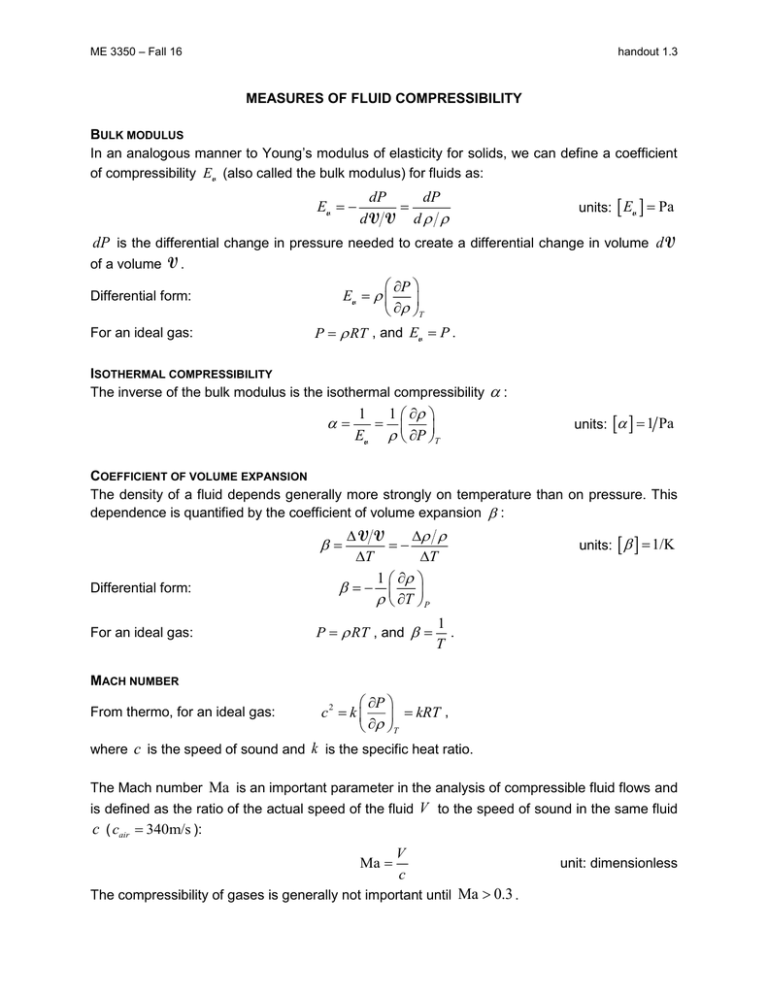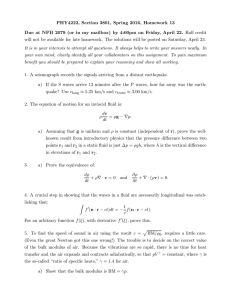dρ ρ ρ α ρ α = β = ρ β ρ c
advertisement

ME 3350 – Fall 16 handout 1.3 MEASURES OF FLUID COMPRESSIBILITY BULK MODULUS In an analogous manner to Young’s modulus of elasticity for solids, we can define a coefficient of compressibility E v (also called the bulk modulus) for fluids as: Ev dP dP dV V d units: Ev Pa dP is the differential change in pressure needed to create a differential change in volume dV of a volume V . P Differential form: Ev T For an ideal gas: P RT , and Ev P . ISOTHERMAL COMPRESSIBILITY The inverse of the bulk modulus is the isothermal compressibility : 1 1 Ev P T units: 1 Pa COEFFICIENT OF VOLUME EXPANSION The density of a fluid depends generally more strongly on temperature than on pressure. This dependence is quantified by the coefficient of volume expansion : V V T T 1 T P Differential form: For an ideal gas: P RT , and units: 1/K 1 . T MACH NUMBER From thermo, for an ideal gas: P c2 k kRT , T where c is the speed of sound and k is the specific heat ratio. The Mach number Ma is an important parameter in the analysis of compressible fluid flows and is defined as the ratio of the actual speed of the fluid V to the speed of sound in the same fluid c ( cair 340m/s ): Ma V c The compressibility of gases is generally not important until Ma 0.3 . unit: dimensionless



